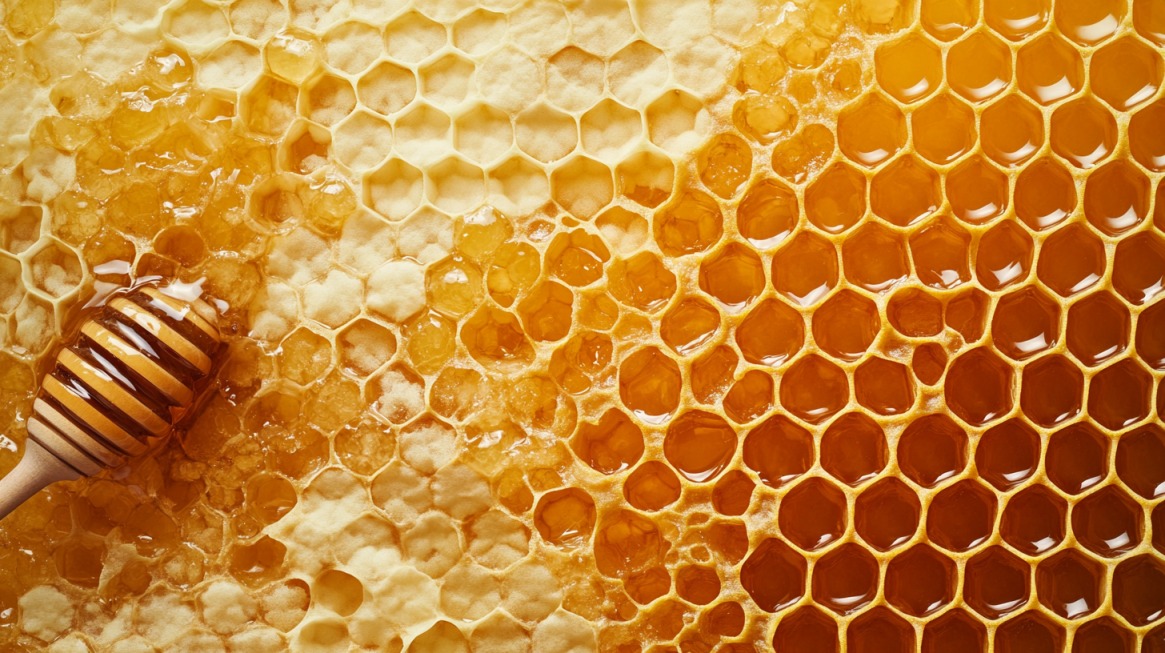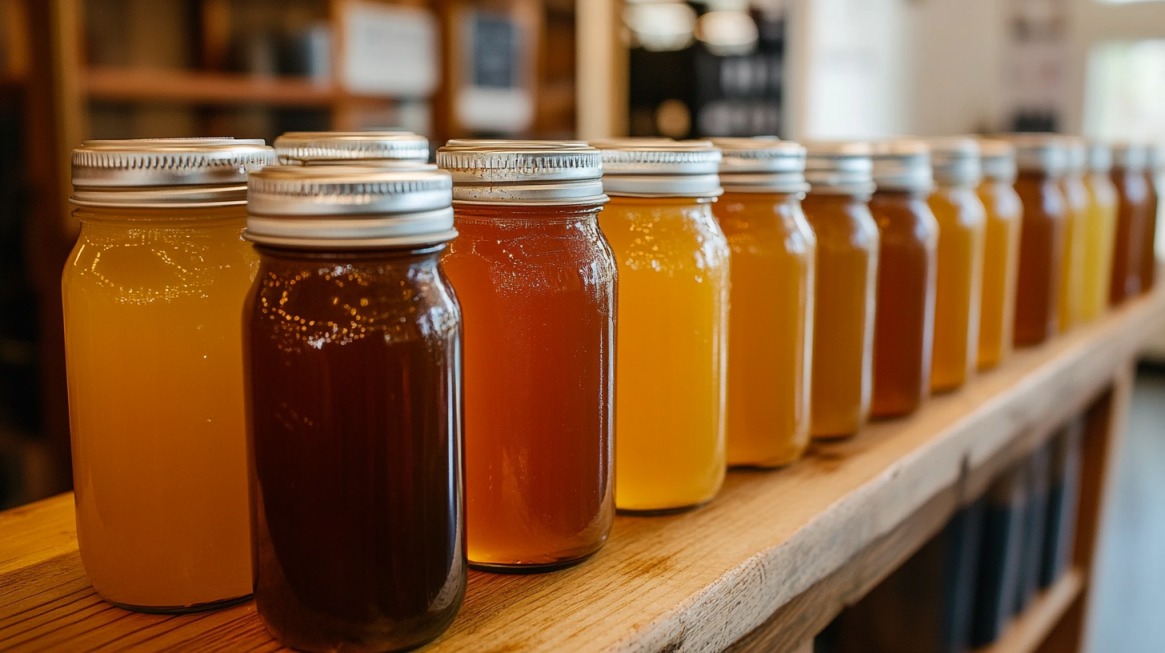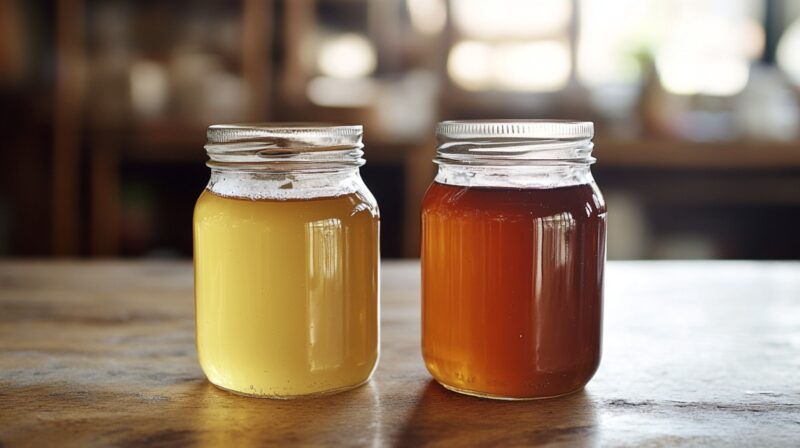Choosing between raw honey and regular honey can feel like a tough decision. Both types of honey offer sweetness and flavor, but when it comes to health benefits, there’s a clear winner.
While your green tea or smoothie might not care which one you use, your body definitely will.
Raw and regular honey differ in terms of processing, nutrient content, and health benefits, making it important to know which one suits your needs better.
The Difference Between These Two
| Aspect | Raw | Regular |
|---|---|---|
| Processing | Directly extracted and strained from the beehive | Heated and filtered to remove impurities |
| Nutrient Content | Retains more vitamins and minerals like copper, zinc, and magnesium | Reduced nutrient content due to pasteurization |
| Enzymes | High in digestive enzymes that help break down complex carbs | Reduced enzyme content |
| Amino Acids | Contains more amino acids that help with protein synthesis and food digestion | Fewer amino acids due to processing |
| Antioxidants | High levels of antioxidants that boost immunity and detoxify the body | Reduced antioxidant content |
| Bee Pollen | Contains bee pollen with anti-inflammatory and healing properties | Bee pollen removed during filtration |
| Bee Propolis | Contains propolis, which has antibacterial and healing properties | Propolis destroyed during processing |
| Sugar Type | Natural sugars that provide lasting energy | May contain added sugars or sweeteners |
| Shelf Life | Shorter due to lack of pasteurization | Longer due to pasteurization |
| Color and Texture | Cloudy and varies in color depending on nectar source | Clear and more uniform in color |
| Flavor | Richer and more complex due to retained natural sugars | Less flavorful due to sugar loss from heating |
Raw honey is in its most natural form, straight from the beehive. It’s extracted and strained through a mesh or cloth to remove any debris like wax or dead bees, but it’s not heated or processed. Regular honey, on the other hand, goes through pasteurization and filtration.
Pasteurization involves heating the honey at high temperatures to destroy yeast and extend shelf life. Filtration removes impurities and makes the honey look clearer and more uniform.
While this process improves the honey’s shelf life and consistency, it also strips away many of the beneficial nutrients and enzymes.
Why Raw Honey Has More Health Benefits

Raw honey outshines regular honey in terms of health benefits because it retains all of the natural nutrients, enzymes, and antioxidants.
- Boosts Immunity and Wound Healing – High levels of antioxidants and bee pollen help fight free radicals and promote faster healing.
- Better for Digestion – Enzymes in raw honey help break down complex carbohydrates, aiding digestion and reducing bloating.
- Natural Energy Source – The natural sugars provide a slow release of energy, making it ideal for pre-workout fuel.
- Supports Heart Health – Research suggests that it can help lower blood pressure and improve cholesterol levels.
- Anti-inflammatory and Antibacterial – Propolis and bee pollen have natural antibacterial and anti-inflammatory properties that promote overall health.
Regular honey, due to its pasteurization and added sugars, may not deliver the same benefits. The heating process destroys many of the natural nutrients and beneficial compounds, leaving behind mostly sugar and calories.
When to Use Raw vs. Regular?
Raw honey works best when health benefits take priority.
It retains more nutrients, enzymes, and antioxidants, making it a great choice for boosting immunity, improving digestion, and enhancing overall health. Its natural composition allows it to provide steady energy, making it an excellent pre-workout fuel.
The versatility of raw honey also makes it ideal for adding flavor and nutrients to everyday snacks and meals.

Best Ways to Use Raw Honey
- Green teas and herbal drinks – Raw enhances the flavor while providing additional antioxidants and natural energy.
- Smoothies and shakes – Blending raw into a smoothie or protein shake adds natural sweetness and nutrients.
- Salad dressings – Mixing raw variant with olive oil, vinegar, and mustard creates a healthy, flavorful salad dressing that complements greens, nuts, and fruit.
- Yogurt and fruit bowls – Drizzling raw over Greek yogurt and berries enhances the taste and provides an immunity boost with antioxidants and natural sugars.
- Spreading on bread with peanut butter – Combining raw with peanut butter on whole-grain bread creates a balanced snack packed with protein, healthy fats, and natural sugars.
Raw honey’s natural composition allows it to blend well with cold and room-temperature foods while preserving nutrients. Its high enzyme and pollen content provide added digestive and anti-inflammatory benefits, making it the better option for everyday health-focused use.
Best Uses for Regular Honey
Regular honey works well for cooking and baking, thanks to its longer shelf life and smooth texture. Its ability to withstand high heat makes it suitable for adding sweetness and moisture to recipes without altering texture.
- Baking – Regular honey mixes easily into batters and dough, giving baked goods a consistent sweetness and soft texture. Cakes, muffins, and cookies benefit from the moisture regular honey provides during the baking process.
- Cooking glazes and marinades – Adding regular honey to a marinade or glaze helps create a glossy finish on meats and vegetables. The mild sweetness balances out savory and spicy flavors in sauces and marinades.
- Sweetening hot drinks – Regularly dissolves easily in hot drinks like coffee and tea, making it a convenient option for quick sweetening.
- Sauces and dressings – Regular blends well into salad dressings and dipping sauces due to its smooth texture and mild sweetness.
Using regular honey in recipes that require heating ensures consistent flavor and texture. Its longer shelf life and stable composition make it ideal for pantry storage and regular use in cooking and baking.
The Verdict – Which One Should You Choose?
Raw honey clearly comes out on top when it comes to health benefits. Its higher nutrient, enzyme, and antioxidant content make it a better choice for boosting immunity, improving digestion, and providing natural energy.
Regular honey may last longer and have a more consistent appearance, but it sacrifices most of the nutritional value in the process. If you’re serious about adding a health boost to your diet, the raw one is the way to go.




